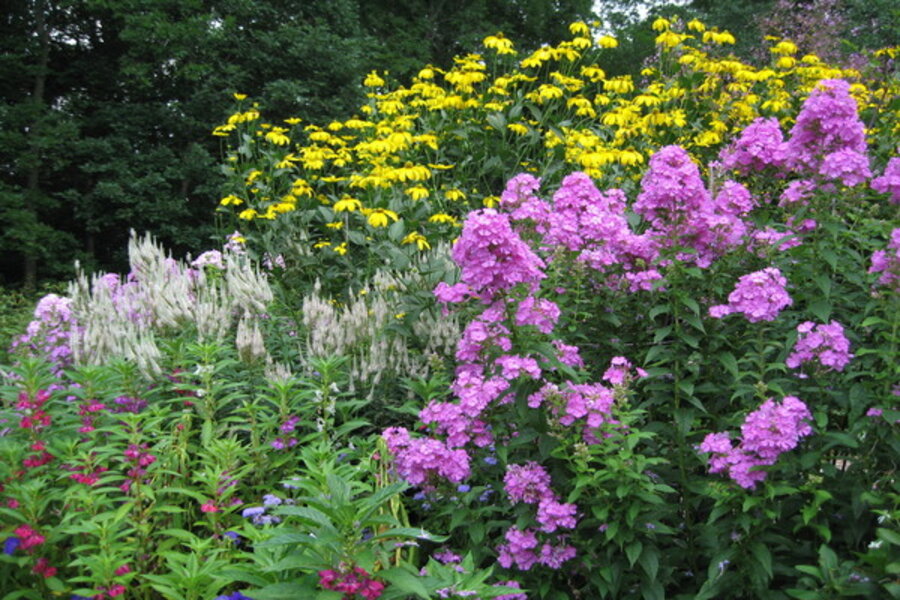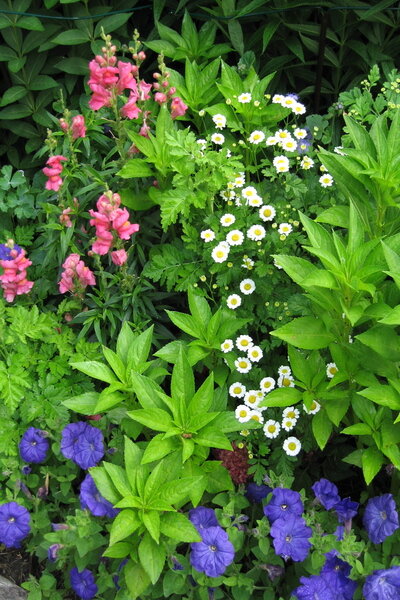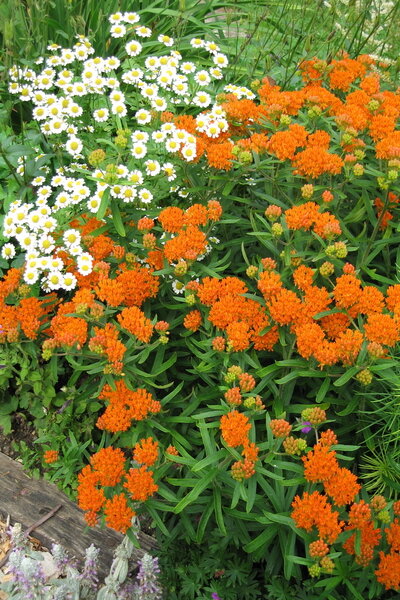A cottage garden primer
Loading...
In more than a dozen years of public speaking on all kinds of gardening topics, I’ve learned that there’s no type of garden more people like better than a cottage garden.
Even if they don’t know what a cottage garden is, show them a picture of one, and they respond with oohs, aahs, and exclamations.
The universal appeal of cottage gardens is due in part, I think, to their humble origins as the dooryard gardens of common people.
How cottage gardens evolved
Hundreds of years ago, before the modern conveniences of grocery stores and 24-hour pharmacies, if something you put on or in your body had a plant ingredient, and if it wasn’t a staple food that had to be raised on real acreage, chances are you grew it in a patch of ground immediately adjacent to your house and concocted the finished product—be it salve, shampoo or soup base—at your kitchen table.
The gallimaufry of vegetables, flowers and herbs needed to stock both larder and medicine cabinet alike became what we call a cottage garden.
Years passed, and eventually people no longer needed (or wanted!) to make as many of their household necessities. Away went the need to grow many kinds of plants, yet the cottage garden did not die out. Perhaps it spoke to some deep craving within us for the things it signified to generations: food, comfort, cleanliness, and (eventually) beauty.
Happily, the pleasantly free-form look of an old-style cottage garden, containing a hodgepodge of plants grown for wildly different purposes in a state of barely contained exuberance, could be rendered just as well with ornamentals as with strictly practical plants.
That’s how we got to today’s cottage garden, an everything-but-the-kitchen-sink affair whose tremendous potential for individuality makes it, stylistically, a natural favorite of American gardeners.
If you, too, are crazy about cottage gardens and think you’d like to give one a whirl, here are some basic things you need to know, boiled down into what you might call a cottage garden “primer.”
How to create a cottage garden
First and foremost, cottage gardens are sun gardens, and if they are more ornamental than practical, they are principally perennial gardens. Since most perennials have a relatively short and well-defined flowering time and some look less than lovely after flowering, you have to plan for the fact that the “action” will be constantly shifting, and plant accordingly.
Next, understand that cottage gardens aren’t necessarily English. For a whole host of reasons, trying to copy an English cottage garden wholesale is not a viable strategy for 99.9 percent of American gardeners. Instead, you want to adapt the style to your region, especially through the use of native plants as substitutes for ones whose needs make them unsuitable for many American gardens.
If you live in an area with growing conditions substantively different from those of Britain — say, the arid Rocky Mountain states — it’s not impossible to have a cottage garden, but the more your soils and climate diverge from what you think of as “English,” the less traditional it will probably look.
Cottage gardens are also crowded. Their full, even voluptuous, appearance comes from packing them with plants. Use plants that tolerate crowding well, and forget about ones prone to rotting diseases.
You’ll also want a large variety of plants of medium to large stature—as large as seems proportionally correct for the space—or you may end up with something that looks more like a rock garden without the rocks.
Now supplement the perennial “backbone” of the garden with a variety of self-sowing annuals and biennials. Here in New England, popular self-sowers include foxglove (Digitalis), forget-me-not (Myosotis sylvatica), sweet alyssum (Lobularia maritima), and honesty (Lunaria annua).
But the list of reliable self-sowers is another thing that will vary by region.
Self-sowing annuals
I encourage you to experiment extensively with self-sowers, but I also caution you to be careful. You’re looking for plants that strike that delicate balance between barely surviving and becoming a pest. Eliminate anything that tends too much toward the latter.
As the renowned (and English) gardener Christopher Lloyd wrote in a roundup of self-sowers he particularly liked, “…when any plant makes itself comfortable, you have to watch it.”
For even greater variety, add some of the long-flowering annuals commonly sold in six-packs, such as Salvia ‘Victoria’ or annual vinca (Catharanthus), as well as long-flowering tender plants such as dahlias (if you have a way to overwinter them), and even shrubs, non-aggressive vines and small trees (if you have room for them).
Finally, if you’re inclined toward the traditional approach of incorporating vegetables and herbs into your cottage garden, there are creative ways to make spots for them. Try using a mesclun mix for edging, or train cucumbers up a trellis.
This is cottage gardening in a nutshell. At my website, I cover a lot of these points in more detail, but of course you’ll learn more by doing than by reading, so I’ll sign off the same way I conclude my lecture on this topic — Happy Cottage Gardening!
Editor's Note: Be sure to scroll through all of the vertical photos on the left. Click on the arrow at the right base of the first photo to see the second and third ones.
-----
As the owner of A Shady Lady Garden Design, Amy Ziffer has been working with landscaping clients in western Connecticut since 1998. She’s a former editor at Fine Gardening magazine, a contributor to many magazines and books, and blogs at her own website. Her specialty is cold-climate ornamental gardening with a focus on the Northeast. In addition to liking horticulture, she’s fond of critters (wild and domestic), physics, math, and intense outdoor sports, especially in the cold and snow. To read more by Amy here at Diggin' It, click here.








